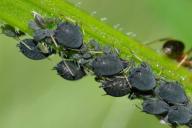In winter, when temperatures can go way below zero, it's important to think about everything water-related that you live outdoors.
For instance, your irrigation system can get easily damaged by cold temperatures, unless you protect it.
Here are a few tips for you to follow.
Turn off the water supply
Locate the main water valve that supplies water to your irrigation system and shut it off.
This will prevent water from flowing through the pipes during freezing temperatures.

Drain the system
Open all the valves and faucets connected to your irrigation system.
This will allow any remaining water to drain out. Make sure to remove water from sprinkler heads, pipes, and valves.
Disconnect hoses and store indoors
If you have hoses connected to your irrigation system, disconnect them and store them indoors.
Freezing temperatures can cause hoses to crack or burst.
Insulate exposed pipes
Identify any pipes that are exposed to the cold and insulate them using foam pipe insulation.
This will help prevent freezing and potential damage.
Protect outdoor components
Cover any above-ground components, such as backflow preventers or valves, with insulated covers or burlap sacks.
This will provide extra protection against freezing temperatures.
Clear debris
Remove any leaves, dirt, or debris from around the irrigation system.
This will prevent clogs and blockages that can cause damage or hinder proper drainage.
Check for leaks or damage
Before winter arrives, inspect your irrigation system for any leaks or damage.
Repair or replace any faulty components to ensure the system is in good working condition.
Monitor weather forecasts
Stay informed about upcoming freezing temperatures or winter storms.
This will allow you to take necessary precautions in advance, such as draining the system or providing additional insulation.
Previously, we talked about growing euphorbia.









